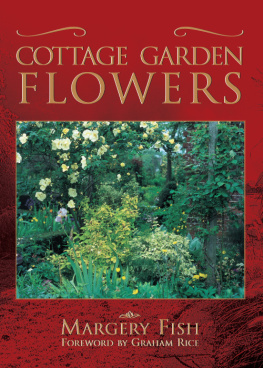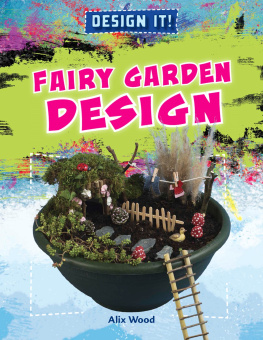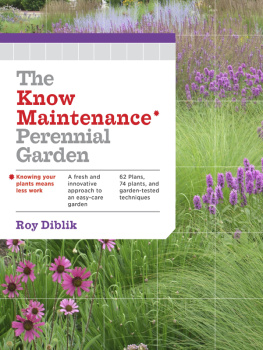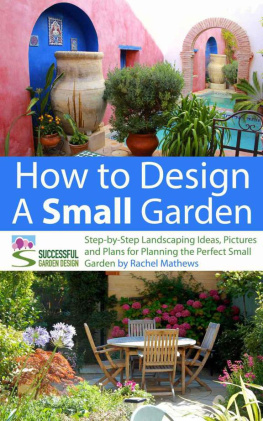The LAYERED GARDEN

A spring view of the hillside mixed border.
The LAYERED GARDEN
DESIGN LESSONS FOR YEAR-ROUND BEAUTY FROM BRANDYWINE COTTAGE
DAVID L. CULP
with Adam Levine
PHOTOGRAPHS BY ROB CARDILLO
TIMBER PRESS
Portland London
To Michael Scott Alderfer, Joanna Reed, and Dennis West
and to my mother and father
Copyright 2012 by David L. Culp. All rights reserved.
Photographs copyright 2012 by Rob Cardillo, except photos on pages 20 (top), 34 (inset), 54 (top), 100, 125, and 160 by David L. Culp. Photo on page 20 (bottom) by Cathrine Culp.
Endpaper illustration by Adrian Martinez
Book design by Laura Shaw Design
Published in 2012 by Timber Press, Inc.
The Haseltine Building
133 S.W. Second Avenue, Suite 450
Portland, Oregon 97204-3527
timberpress.com
2 The Quadrant
135 Salusbury Road
London NW6 6RJ
timberpress.co.uk
Printed in China
Library of Congress Cataloging-in-Publication Data
Culp, David L.
The layered garden: design lessons for year-round beauty from Brandywine Cottage/David L. Culp; with Adam Levine; photographs by Rob Cardillo.1st ed.
p. cm.
Includes bibliographical references and index.
ISBN 978-1-60469-236-5
1. GardensPennsylvaniaDesign. 2. GardeningPennsylvaniaAnecdotes. I. Levine, Adam. II. Cardillo, Rob. III. Title.
SB473.C84 2012
635.09748dc23 2012007640
A catalog record for this book is also available from the British Library.
I do hold it in the royal ordering of gardens, there ought to be gardens for all months in the year, in which, severally, things of beauty may be then in season.
FRANCIS BACON,
Of Gardens, 1625

A selection of blossoms of my Brandywine Hybrid hellebores reveals the stunning allure and spectacular colors of these distinctive winter-blooming plants.
CONTENTS
CHAPTER ONE
THE LAYERED GARDEN
CHAPTER TWO
THE GARDEN AT BRANDYWINE COTTAGE
CHAPTER THREE
SIGNATURE PLANTS THROUGH THE SEASONS
EPILOGUE
WHAT IS BEAUTY?

Wisteria frutescens is not invasive like the Asian forms of the genus, and in some years it will rebloom.
FOREWORD

A bright May morning lights up the borders around the picket-fenced vegetable garden.
IF YOU ARE READING THIS, YOU HAVE PROBABLY already been intrigued and seduced by the beauty glimpsed while looking through this book. Maybe you studied the table of contents, and noticed that the book is chock full of practical information to complement its visual enticement. Or perhaps you are lucky enough to know David Culp and his garden, or someone who does told you to get this book.
All good reasons, and there are more. Books by great gardenmakers that combine design inspiration, plantsmanship, and practical information are few and far between. And those that do it in a welcoming manner straight from experience and from the heart, even fewer yet. For readers seeking advice on garden design, be they setting out on making their first garden or wondering how to transform an existing one into something as complex, beautiful, and ever-changing year-round as Davids garden at Brandywine Cottage, depicted so richly in the photographs, this book will inspire and teach. And for the many seasoned gardeners who find it increasingly difficult to manage our plant obsessions and collectors impulses with aesthetic goals for our gardens, this is the book to read.
As an apostle to abundance and diversity yet also to overall beauty, David explores and explains his layering technique and how it allows him to keep experimenting with how much beauty and pleasure I can wring out of a space. By taking the reader on a journey of how he created and continues to change and tend his immensely plant-rich garden, we see the ways he and we can orchestrate seasonal moments and color progressions, vivify and showcase our favorite plants, deal with their inevitable lapses, and find gracious ways to integrate yet more of the plants that have been winners and new plants that we desire. Specific plants and practical advice are threaded throughout. For me, a reluctant reader who would much rather learn by doing, this book is a revelation in how to cover an immense amount of minute details as well as general overarching ideas without making readers feel like they are being taught. It is like a more organized and comprehensive version of spending one day a month for an entire year at Davids side, helping while he goes about gardening, with him talking to you the entire time.
As his many fans and friends know, David Culp is an American treasure. It is difficult to wrest this man away from his passionsplants, gardening, and sharing with people. This is a man of intuition, warmth, optimism, generosity, and incredible energy and work ethic. He is a gardener and designer who learns by doing and by connecting with others as much as or more than by studying and drafting. Readers are fortunate he has finally found time to write this book. What also sets this book apart are the at-times humorous and often moving glimpses into Davids gentle, thoughtful, and humble philosophies on gardening and on life. Im certain that the only reason he has created this superb tome, aside from exhortations from friends and colleagues, is that his life is one of doing and sharing, and the act of writing a bookno matter how daunting and tediousfits that description as well as do all the other things David takes on.
For these reasons, this book is destined to be a classic. But it is also uniquely modern. David is a man who has preceded current trends in sustainability by, as he puts it, living and working within our means and leaving a light footprint on the land. He has wanted to nourish the web of life since a child, and his wildlife-friendly, site-adapted practices ring all the more true in this day and age of heightened awareness of the need to use and steward thoughtfully. And, on a lighter note, he has raised vegetables and chickens and made a roof garden long before they returned to the public consciousness and became popular obsessions.
David understands and eloquently describes making the connection of a garden to its site, house, and to the natural and cultural aspects of its regioncreating a sense of place. He also deeply feels the importance of the connection of a garden to its makers past, family and friends, forebears, and to the gardenmaker himself or herself. He is a man who is joined to the past with respect and gratitude, who lives with passion and pleasure in the present, and who looks forward with curiosity and hope to the future. His garden and his words reflect this, making this book also a book on how to live life, with a garden or without. Even a nongardener will come away inspired by this mans kind and generous view of the world (and probably also inspired to start a first garden).
Gardenmaking, in its finest form, is a celebration of life and of love. David and this book epitomize this. Reading his words and seeing images of his garden, you will learn, be inspired, and enjoy.
Next page










